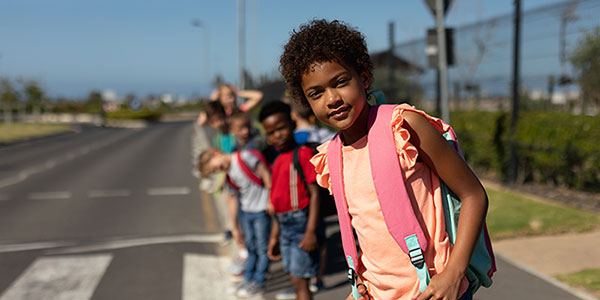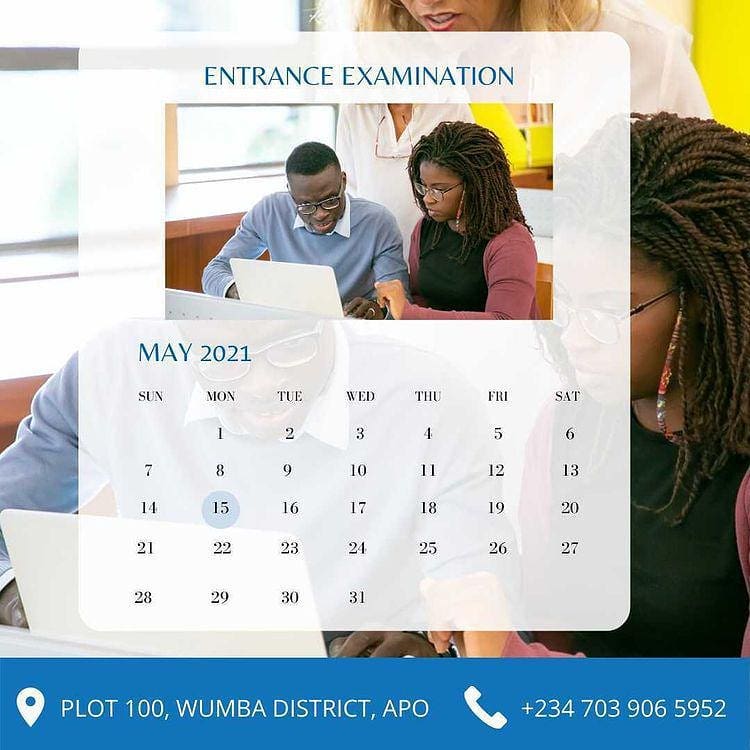Step 1: Think about your child and your family.
Begin your search for the finest school by considering what you want a school to provide for your child. Your youngster may have specific language or educational requirements. Keep these things in mind. After all, you are the one who is most familiar with your child.
Your child’s needs
- Is there a need for your child to be in a more structured setting?
- Do you think your child might benefit from a less regimented environment?
- Is your youngster in need of more challenging work?
- Is your youngster in need of extra one-on-one attention?
- Is it common for your child to require extra assistance or time to finish an assignment?
- Do you have any concerns about your child’s learning abilities?
- Is it necessary for your child to be in an atmosphere that encourages creativity?
- Is your youngster in need of an English language learning program?
learning style of your child
- Is your youngster a visual learner who like to observe how things work?
- Is it preferable for your youngster to understand how something works by reading about it?
- Is your child the type of person who learns best by listening?
- Does your youngster like taking part in debates?
- Do you have a youngster that enjoys learning via physical activity?
- Is your kid more logical or mathematical in nature?
- Is your youngster creative or musical?
- Is it possible that your youngster prefers to study in a group setting?
- Do you have a youngster that enjoys working alone?
School location
- Do you want your child to attend a school that is a short walk from your house?
- Can your child’s skills be developed outside of your community?
- How far are you willing to go for your child to be bused?
- How far will you go to get your child to school?
- Is your youngster interested in going to school with his or her friends?
- Do you want your child to attend a school that is close to your child’s after-school care? Is it close to your workplace? Do you live near a close relative?
- Is there anything particular about your child’s transportation requirements that must be addressed when selecting a school?
Step 2: Collect school-related information.
If you wanted to buy a vehicle, vacuum cleaner, or refrigerator, you might ask friends and family for recommendations and seek for information on the Internet, in consumer magazines, or in other published materials. Similarly, while looking at schools, you may need to make phone calls, collect written materials from various schools, and check for stories in your local newspaper to obtain the information you want. You can look at public school report cards and attend parent fairs. If you can locate a school that brings out the best in your child, the effort will be worthwhile.
You’ll want to know about school policies and services in addition to the schools’ courses and philosophy. Parents may also want to think about the school’s after-school offerings, such as sports, clubs, tutoring, or academic enrichment. Some schools provide extracurricular activities after school. These centers offer educational activities that supplement what is taught in school outside of typical school hours’before and after school, or during summer vacation. You could also inquire if the school provides extra educational programs, such as free tutoring, outside of regular school hours as part of the No Child Left Behind Act.
Curriculum
– Is the school’s core academic curriculum strong, including English, history, mathematics, science, the arts, and foreign languages?
– In addition to the main disciplines, what other courses does the institution offer?
– What evidence do you have that the school is teaching kids to read effectively?
– Is there a specific focus or theme for the curriculum at your school?
– Is there an Advanced Placement program, , or high school honors courses available at the school?
– Is there an enrichment program for all kids at the school? Is it appropriate for gifted students?
– Are there any extracurricular activities at the school that support what is being taught?
– Is there a good English language learning program for kids who really need it?
– Is there a curriculum in place and the essential supports in place for your child’s unique learning needs if he or she has them?
Learning Approach
- Is there a specific teaching and learning style at the school (e.g., group projects, individual performance, regular testing)?
- If so, do you believe your child will benefit from and like this method?
- Is the school doing all possible to ensure that every student succeeds? Is it possible for children to receive more assistance when they require it?
- Is it possible for the school personnel to communicate in your child’s native language?
- Is it possible for children with low English language skills, learning impairments, or other special needs to learn and succeed on tests?
- Is there a policy on homework? Is it in accordance with your expectations for the amount of homework your child should complete?
- Do you want your child to attend a single-gender (all-boy or all-girl) or coeducational school?
- What is the size of the classes?
Academic performance
- What are the test scores of the school in comparison to those of other schools? (If it’s a public school, look at the report card; if it’s a private school, ask the school for details.) On school report cards, look for the ‘Parent Tip.’)
- Have exam results improved or deteriorated in recent years?
- What is the school’s explanation for the increase or decrease? How well did children who were similar to yours do on these tests?
- How do pupils who are transitioning to the next level of education fare in their new schools?
- How many kids drop out before finishing the last grade?
- What notable accomplishments or awards has the institution received?
A code of conduct
- What does the school do to promote character and citizenship development?
- What is the policy on discipline? How does the school deal with misbehaving students?
- Is it true that instructors respond to pupils fairly? Is there a program and resources in place at the school to help students avoid and deal with behavioral issues?
- Is it permissible for kids to leave school on their own?
- What safety precautions has the school taken?
- What safety precautions have been taken?
- What is the school’s policy on absences?
- How does the school encourage students to come to school every day?
- When children are missing, do school officials contact their parents?
- Is there a drug and alcohol abuse prevention program at the school?
- Is there a dress code at your school?
- Are students required to wear uniforms?
Safety
– Is the school in a secure environment?
– What strategies does the school use to prevent and address drug, alcohol, and tobacco-related issues?
– What steps does the school take to prevent and address violence, bullying, harassment, and other types of abuse?
– What security precautions does the school take? What safety precautions have you taken?
– What kind of relationship does the school have with the local cops?
– Is a police officer on duty during the school day and during extracurricular activities?
– What information does the school have about severe crime?
– What data is there on pupils who bring weapons to school?
– Is there a local and national emergency plan in place at the school?
– What steps does the school take to ensure that parents and administrators are aware of the emergency plan?
– Is there any kind of practice?
– When the school has to close due to an emergency, how does the school tell parents?
– How does the school interact with parents who speak a language other than English?
Offers that are unique
- After school or on weekends, what extracurricular activities does the school provide?
- Is it possible for all pupils to participate in extracurricular activities?
- What extracurricular activities do students have access to?
- What intramural activities do students have access to?
- What activity receive the most resources and attention?
- Are there publications for students and for the school?
- Is there a field trip program at your school?
- Do all pupils have access to them?
- Are there any parent-oriented publications accessible in other languages?
Step 3: Go to a school and observe what is going on there.
Make an appointment to see the schools you’re interested in by contacting them. If feasible, visit a few classrooms and tour the schools during regular school hours. To obtain a genuine idea of how a school functions, avoid visiting during the first or last week of the term.
Scheduling an appointment with the school administrator is an excellent approach to get answers to your questions. Attend an open house, parent-teacher meeting, or other school activity if feasible, since this will give you with vital information about staff, students, and parents’ views.
Pay attention to what instructors have to say about the school. Teachers will be the ones who have the most contact with your child, so you’ll want to know if they’re well-prepared, devoted, and enthusiastic about their jobs.
Culture
– Is the school secretary pleasant and helpful?
– Is the school tidy and orderly?
– How do the bulletin boards appear?
– What are the methods for displaying student work?
– What methods does the school use to communicate with students and parents (weekly/monthly newsletters, e-mail, or a website)?
– Do the pupils look polite, cheerful, and well-behaved?
– Is there an open door policy for all parents?
– How are students with a wide range of learning requirements (for example, students with impairments and students with low English proficiency) handled?
– Do the teachers appear to be approachable and helpful?
Principal
– What is the principal’s education philosophy?
– What is the principal’s stance on discipline?
– What extracurricular activities do you think the principal is most interested in?
– How well-known is the principal in the community?
– Is the principal generally present at school and available to speak with parents?
– Is the principal able to get to know the students?
– How frequently does the principal conduct observations of teachers?
– What steps does the school take to retain competent teachers and enhance teacher performance?
– How does the principal handle parental concerns and complaints?
– What is the principal’s approach toward kids with a wide range of learning needs (for example, children with disabilities and students with low English proficiency)?
– What are the school’s strengths, according to the principal?
– What are the school’s shortcomings, according to the principal?
– Where, according to the principal, might the school improve?
Teachers
– How do teachers assess their students’ work?
– Do teachers have high expectations for all pupils to attain high academic standards?
– How do professors communicate their expectations to their students?
– Do teachers discuss the course material and objectives with parents?
– When and how often are instructors accessible for parent conferences?
– Do teachers offer homework? Is it rigorous? Frequent? Sufficient?
– Are the professors well competent to teach in their subject areas (do they know what they’re talking about)?
– Do instructors have the skills and expertise to work with children who have unique learning needs?
– Is there specialist personnel accessible to handle a child’s specific learning requirements (e.g., speech therapist, psychologist)?
– Is there specialist professionals (e.g., speech therapists, psychologists, or aides) accessible to handle a child’s specific learning needs?
– Do the professors have a personal knowledge of the pupils in their classes?
– Is it possible for instructors to give extra assistance to students?
– What is the school’s policy on responding to parent queries by teachers?
– Are there websites where students and parents may find class notes and other information?
Students
– What is the student attendance rate?
– What are the opinions of the pupils on the principal?
– What do students have to say about their professors?
– Is there any school spirit among the students?
– What are students’ opinions on homework?
– Do students like and participate in field trips?
– Is the school a safe and secure environment for students?
– What are the opinions of student publications?
– What do students have to say about the school in general?
Parent and community involvement
- What methods does the school use to increase parental participation?
- What are some of the ways that parents may participate?
- Is it encouraging for parents to volunteer?
- Is there a parent-teacher organization at the school?
- Is there a period when parents can attend meetings and events at the school?
- How popular are back-to-school nights among parents?
- Is it expected that families help with homework?
- What is the frequency with which the school communicates with parents?
- Is the school active with community leaders?
- Is there any collaboration between the school and local companies and organizations?
- Is it possible for parents to participate in the formulation of school policies?
Reputation
- What is the community’s opinion of the school?
- How do other parents feel about the school?
- Is the school well-liked by other schools, especially those that receive its pupils (when they go to the next level)?
- Is there any recognition for the school?
- Do individuals relocate to the neighborhood in order to attend school?
- What do the school’s graduates have to say?
- Have the school’s alumni made major contributions to the community and their chosen field?
Step 4: Submit an application to the school of your choice.
You will go through the process of applying to a school (or schools) of your choosing and enrolling your kid once you have chosen the school(s) that you believe would be the greatest fit for your child. If your child is not accepted to their first choice, consider applying to multiple schools.
You should start this procedure as soon as possible to guarantee that you fulfill all of the dates.
Admissions procedures differ from one school to the next. You may be asked to give a school transcript, recommendations, or other documents in order for your kid to be evaluated or interviewed. It would be beneficial to understand about the school’s admissions requirements. You’ll want to double-check that your information about when and how to apply is correct.
Choose one or more colleges to which you want to apply.
- Which schools would you want to apply to?
- What is the deadline for each school’s application?
Before the deadlines, submit papers and applications.
- Have you completed each school’s application in its entirety?
- Have you submitted all of the needed supporting documents (deposit, student transcript, exam results, letters of reference) with your application?
- Have you submitted your applications by the school’s deadline?
Follow up
- Have you called each school to inquire about the progress of your child’s application?
- When will you receive notification from the schools that your kid has been accepted?
- When do you have to let the school know that your child intends to attend?
- When will you tell your child’s schools that he or she will not be attending?
Congratulations
Congratulations on all of your hard work in getting to this stage. Your active engagement and interest for your child’s education will be extremely beneficial to him or her. You may now take the lead in ensuring that your son or daughter receives the greatest possible education by gathering information, speaking with other parents, touring schools, and using your freedom to choose. But this is only the beginning. You may help your kid go even farther by keeping active in their education, encouraging them to work hard, and offering additional learning opportunities at home and in the community. Remember that it is both your right and your obligation to ensure that your kid or daughter receives the best education possible.









